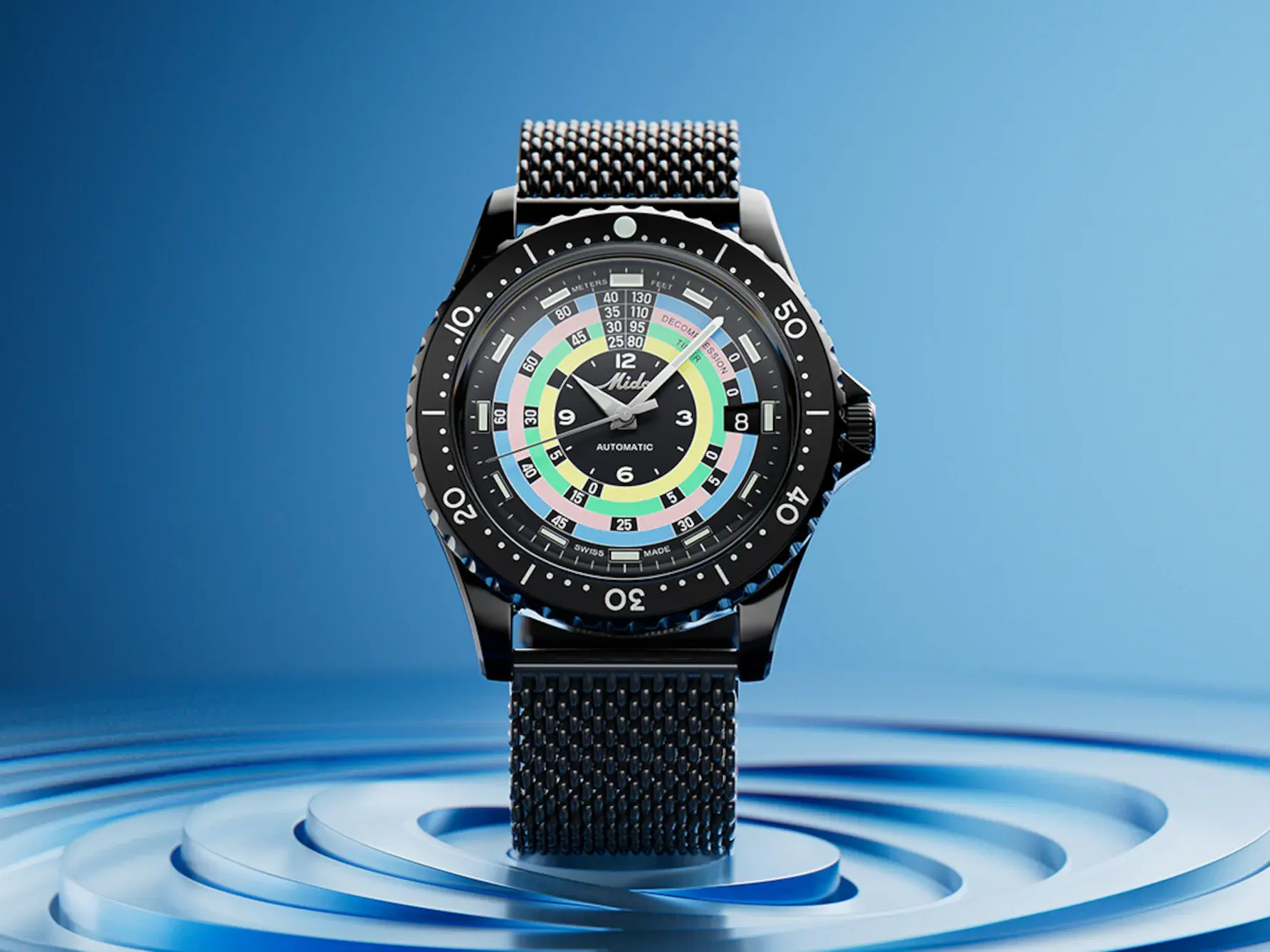In 2020, Mido tapped into a peculiar moment of their history with the release of a new Ocean Star Decompression Timer. The original design was used in the late ‘50s, and officially released in 1961 as a diver’s tool to quickly navigate decompression tables upon ascent, particularly useful if your dive deviated from what was planned. The watch used a monocoque case and boasted a 300 meter depth rating, but it was the colorful dial that left a lasting impression, and it is this component that makes the re-issue a standout today. Dive computers are ubiquitous these days, and for good reason, but that doesn’t mean we can’t enjoy the innovative chart mapped onto the dial of this watch in colorful rings. There’s a story with this watch, and that has value all its own.
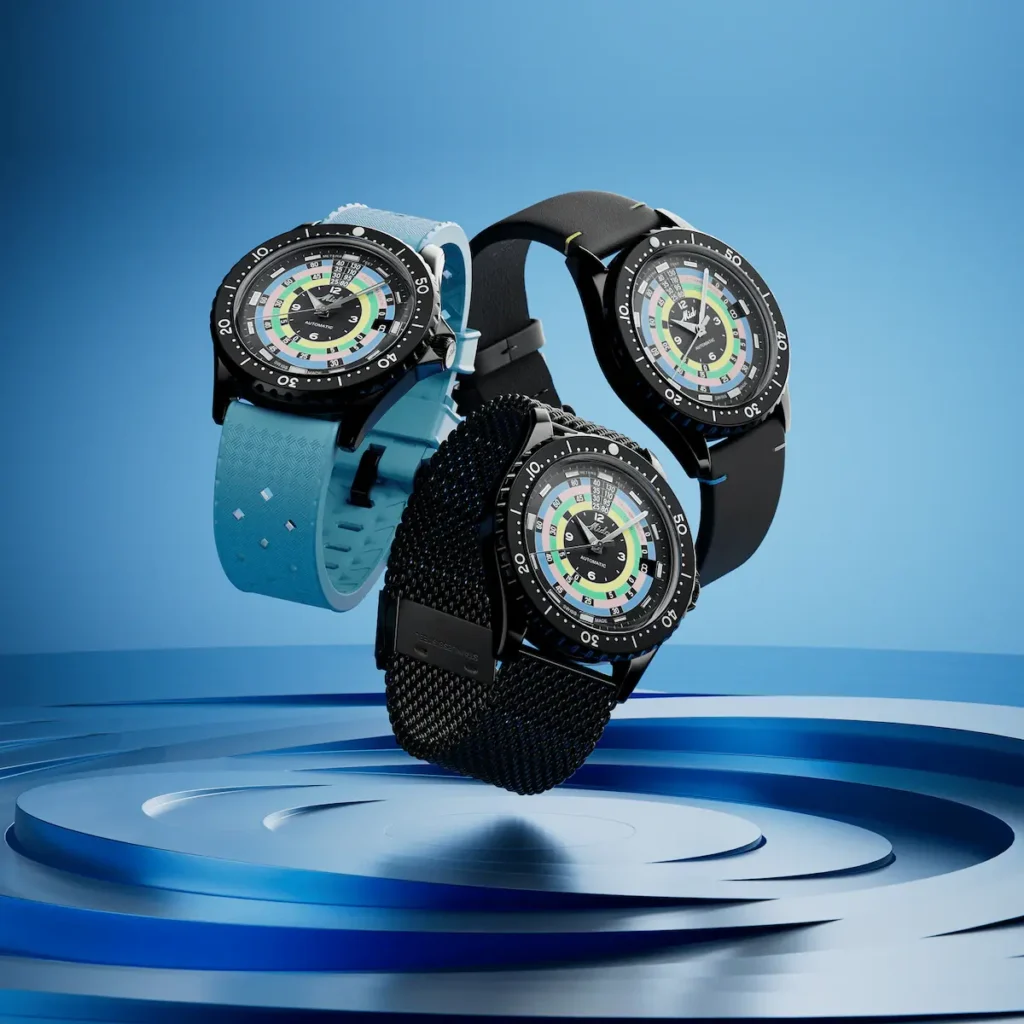
Decompression tables are used by divers preferably well before getting into the water, during the planning stages of a dive. These tables will dictate the length of required decompression stops depending on the depths reached, and the amount of time spent at those depths. As it relates to the tables on this watch, it’s important to note that these tables can also account for the time already spent at certain depths from previous dives on the same day, and adjust the bottom time allowed, and stop length accordingly.
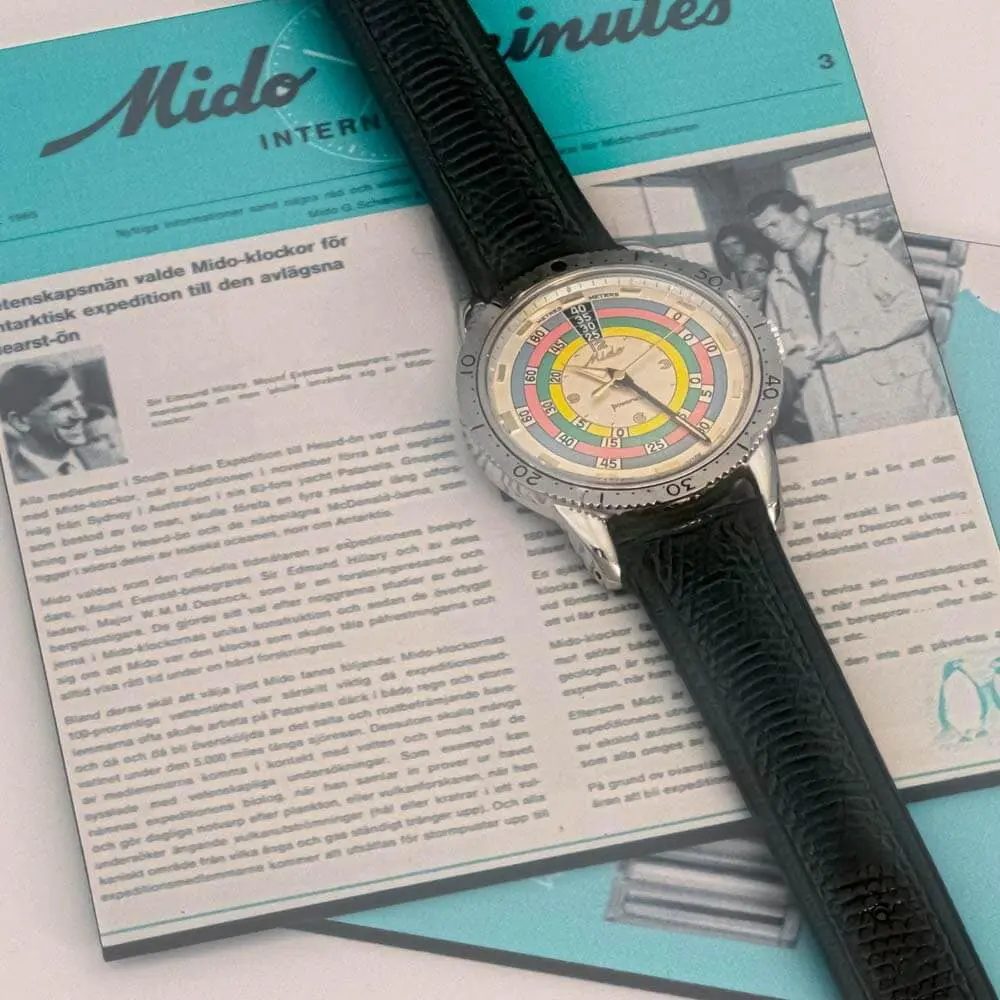
These stops allow the body to off-gas, or release nitrogen and other gasses that have made their way into the bloodstream at the greater pressures experienced at depth (the greater the depth, the greater the pressure). As the body ascends, the decrease in pressure will see these gasses expanding, and making their way out of the body. This must be done in a safe and controlled manner by stopping at predetermined depths for varying lengths of time to avoid nitrogen bubbles forming in the tissues of the body, leading to decompression sickness.
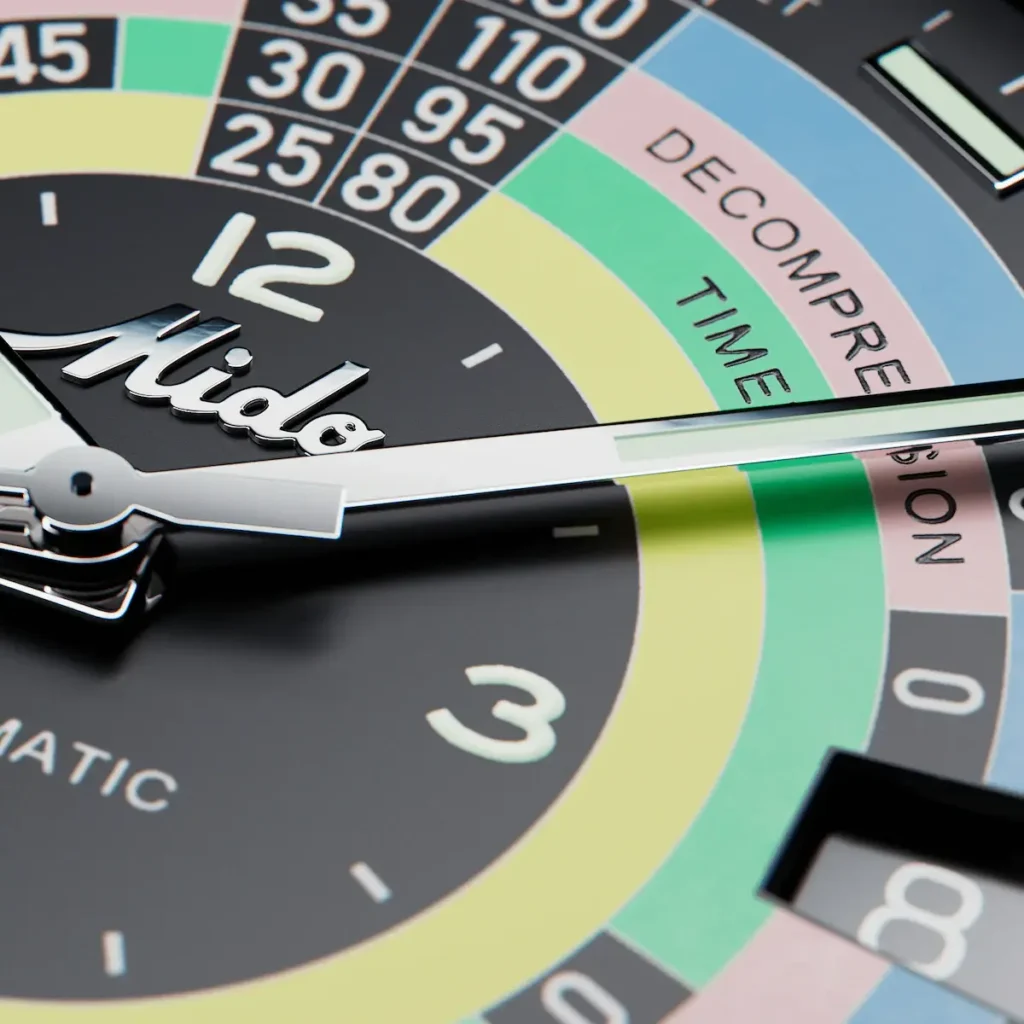
All of this to say, these decompression stops are quite important, and calculating them on the fly is a risky proposition. But that’s exactly what this Mido, and watches like the Vulcain Nautical Cricket allowed divers to do. At depths frequented by recreational divers, generally less than 60 ft or 18 meters, a single ‘safety stop’ is performed at 15 ft, or ~5 meters, though controlled emergency ascents can be performed without too much risk from these depths.
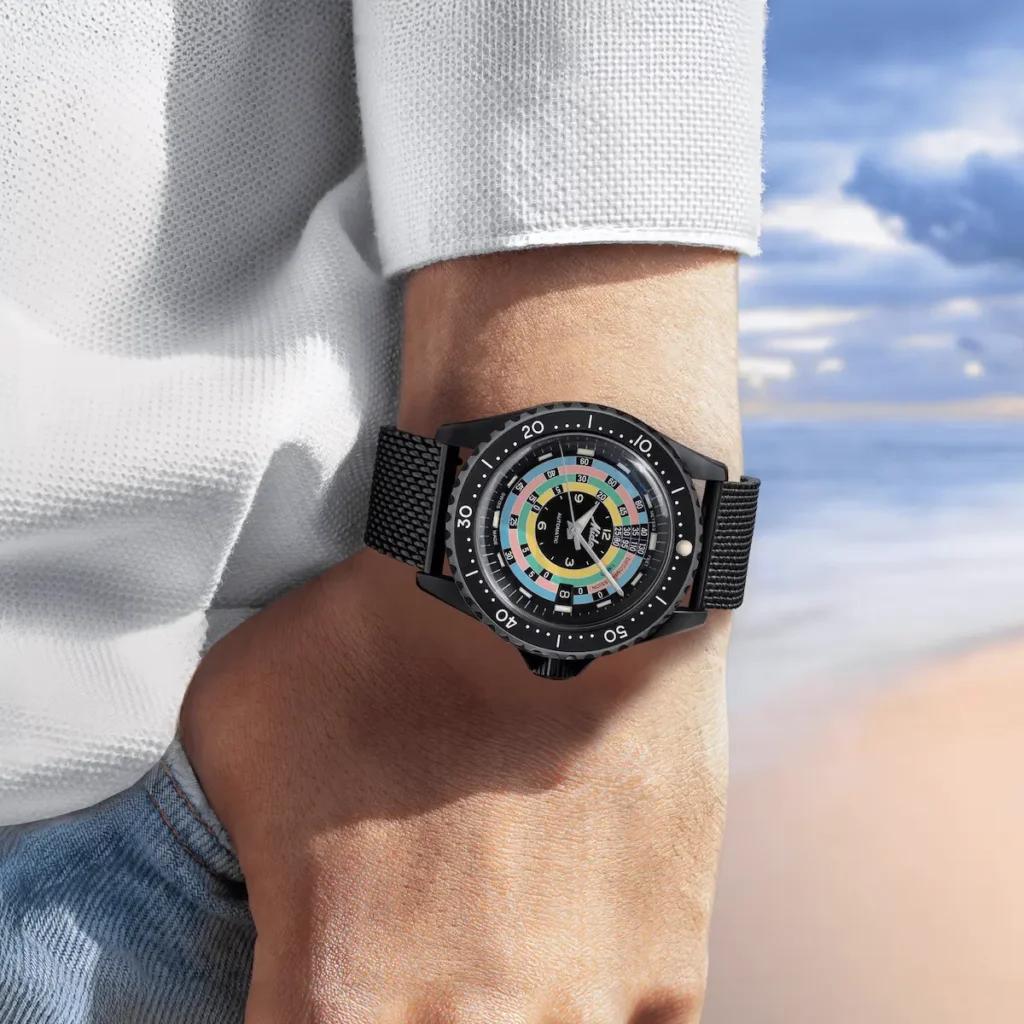
The idea of the Ocean Star Decompression Timer watch is that a diver can quickly discern their total required stop time assuming they know the depth they’ve reached, and the amount of time they’ve spent there. The colorful rings each represent a different depth, and the longer you go around each ring, the longer the required stop times become. It’s handy, and it certainly looks cool, but it’s not a system I’d want to have to rely on during an actual ascent. Though likely better than nothing, in a pinch.
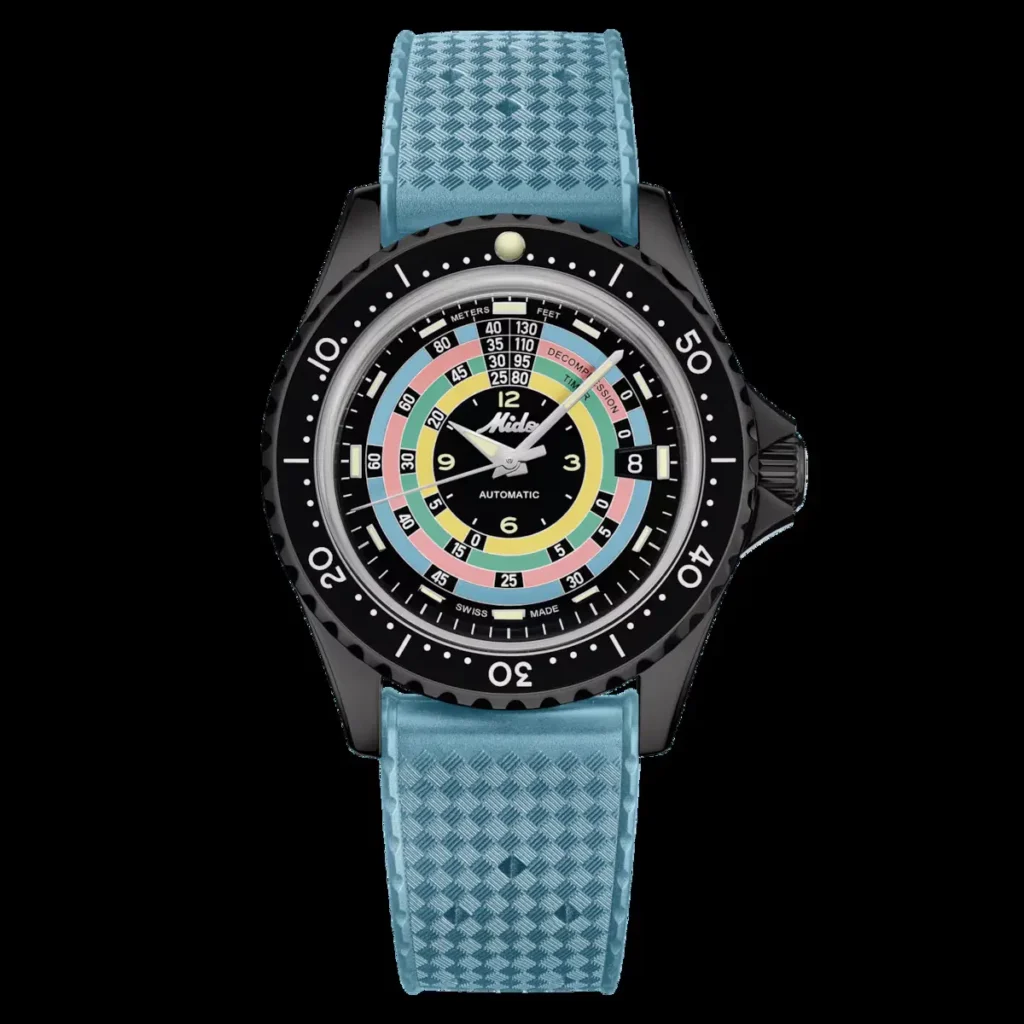
The latest variation is a limited edition featuring a black PVD case that measures 40.5mm in diameter, and 13.4mm in thickness. Mido is using the ETA based caliber 80, providing 80 hours of reserve. The black base of the dial is framed by pastel colored rings representing different depths, pushing the dial itself to a small central portion, where the hours can be read via the truncated hour hand.
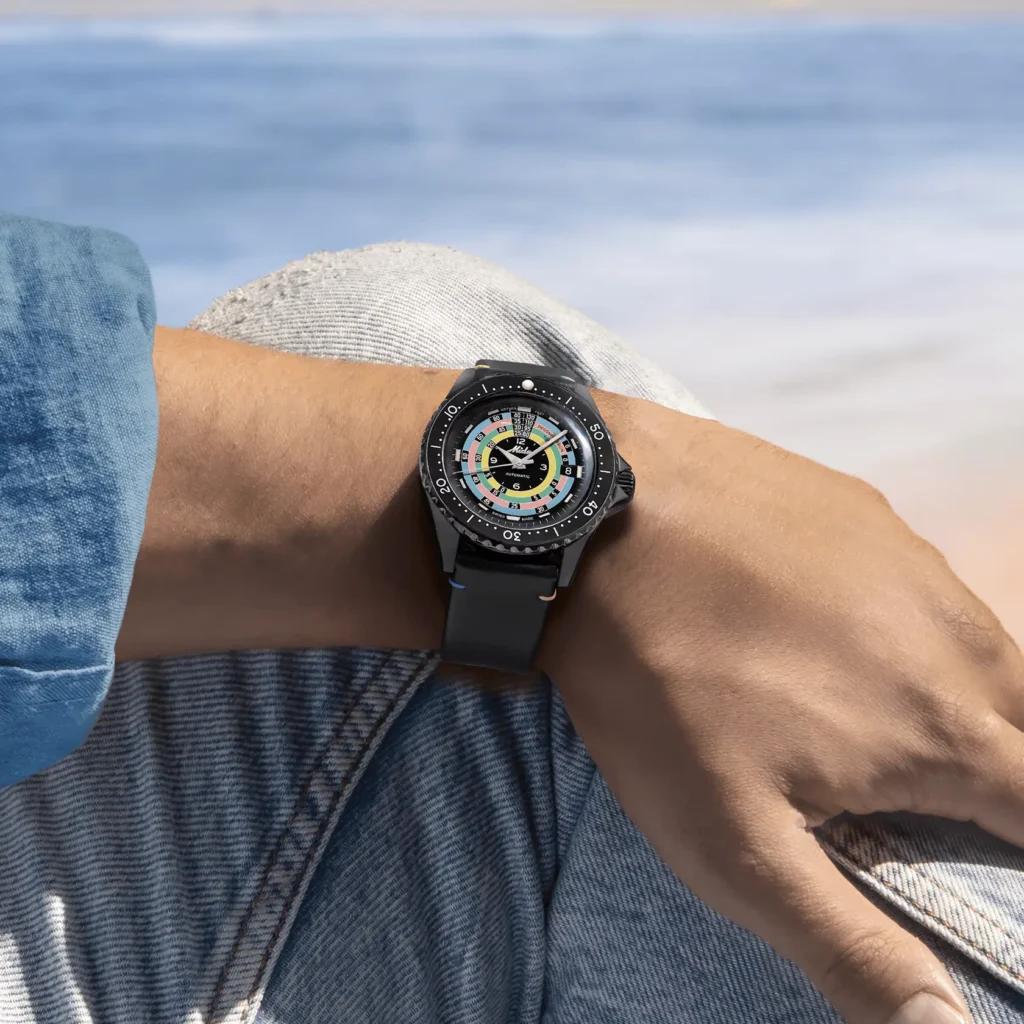
Setting aside any practical concerns, it’s a great looking design. The watch holds up remarkably well today, and once again, offers a really cool story to tell. Mido will produce 1,961 examples of this Decompression Timer, with pricing beginning at $1,480. Mido

